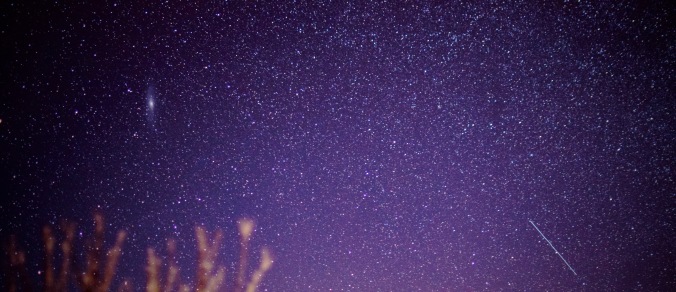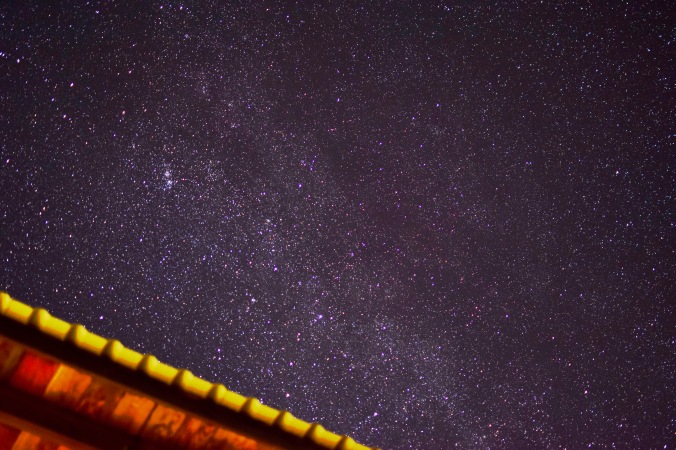Please enjoy some examples of my night sky photography with accompanying narrative, taken from various locations across the Scottish Highlands. I’m very keen on capturing images as close to what the human eye can see in nature, so almost all my pictures are single exposures with minimal post processing. Please click on the individual pictures for a larger view.
I’m very happy for my images to be reused and shared online but would ask, where possible, for a name credit and link back to my website modulouniverse.com.
Stephen Mackintosh, Inverness, Scotland.
The Milky Way

The Milky Way – Cairngorms
‘For me, looking at the Milky Way is a profound and elevating experience. It reminds me that I’m embedded within a vast galactic disc containing billions of stars, and produces simultaneous feelings of remoteness and belonging within the wider cosmos.
With over a third of the world’s population now unable to access the Milky Way due to light pollution and skyglow, viewing this distant band of starlight is becoming a precious and rarified experience. Loosing sight of the Milky Way disconnects us from our place within a grander scheme – and perhaps removes a vital check against our human tendency towards self importance.’
An Island Universe

The Andromeda Galaxy above Abriachan Forest
‘Can you see the oval smudge to the left of the image above? Is it a comet? A star cluster? A nebula?
None of these guesses are correct or come close to representing the scale of this object. Because this faint ellipsoid of starlight is in fact another galaxy. A galaxy completely separate from our own at an unimaginable distance away.
This particular galaxy is called Andromeda and it’s one of the most far away things you can see with your own eyes under dark skies. Bring a pair of binoculars into play and you’ll suddenly see structure – a bright galactic core and a faint glowing halo representing dust lanes that make up its giant spiral structure.
Think for a minute what we’re looking at. An island universe, separated from us by 2.5 million light years, containing an estimated 400 billion stars.’
Sunsets

Solstice sunset from the Bunchrew shoreline
‘We take our Sun for granted. On a typical day its light filters down through the clouds, giving us the very mundane concept of daylight. But occasionally we see the Sun put on a singular display, setting the sky ablaze with colour or disappearing over the horizon as a vast red orb. In the north of Scotland these sunsets and sunrises are much more prolonged and often produce spectacular sky effects.
It’s during these special moments that I’m often reminded that our Sun is in fact a nearby star. A vast ball of nuclear fire powering all living systems on Earth and pulling our tiny world, along with the other members of our solar system, in a perpetual gravitational dance.’
Moon

The waning crescent Moon and Venus – Inverness
‘Our Moon is a wonderful thing to behold. The origins of the word can be traced back to the old English ‘Moonth’, or in modern times ‘Month’. Going back further we arrive at the root word ‘Meh’, meaning to measure. Because from ancient times the Moon was used as a device for measuring intervals of time, each lunation (or cycle of phases) taking nearly 30 days and its sidereal motion against the background stars a little over 27 days.
Watching the Moon transition through its phases is something I recommend everyone do, starting with the thin waxing crescent (always sighted close behind the setting Sun), through its bright gibbous and full aspects, and finally ending with the waning crescent, best seen seen in the early dawn sky.’
Open Star Clusters

The Double Cluster – Abriachan Forest
‘When you first look at the night sky it can appear like a sea of randomly distributed points off light. Beyond the constellations, which act as convenient signposts, it’s difficult to know what you’re looking at. One thing you might notice, especially under really dark skies, is the appearance of diffuse looking stars or out of focus clouds of light. More often than not these are ‘open star clusters’.
Open star clusters reveal their true nature when looked at through binoculars or a low power telescope. Under such magnification they burst into life as dozens of bright stars. Some, like the Pleiades, can even be resolved with your naked eye.
These clusters are adolescent stars, incubated together from the same interstellar nebula, which have yet to mature and drift apart to join the general distribution of stars. My two favourite clusters to photograph are the Pleiades in Taurus and the Double Cluster in Perseus.’
Northern Lights

Northern lights over the Black Isle, Inverness
‘While still a novice aurora hunter I’m always surprised at the number of people living in the north of Scotland who claim to have never seen the northern lights. I think this has more to do with our indoor sedentary lives and the spread of light pollution than the rarity of the aurora itself. Experienced aurora hunters like Graham Bradshaw will tell you the aurora is in fact a fairly common occurrence in Scotland – you just have to get out there more often to increase your chances of seeing it.
I couldn’t agree more. The more you travel into dark locations away from light pollution the better chance you’ll have of seeing these beautiful columns of scintillating light. Standing at the threshold of your doorway and looking north will almost certainly result in failure. The light is so subtle you need properly dark adapted eyes or the aid of sensitive camera equipment. Aurora warning apps can help but these are notoriously unreliable. Indeed, some of the most energetic aurora activity I’ve witnessed has arrived with no warning whatsoever.
So my advice. Get out more. Get away from urban lights. And remember to look north.’

























